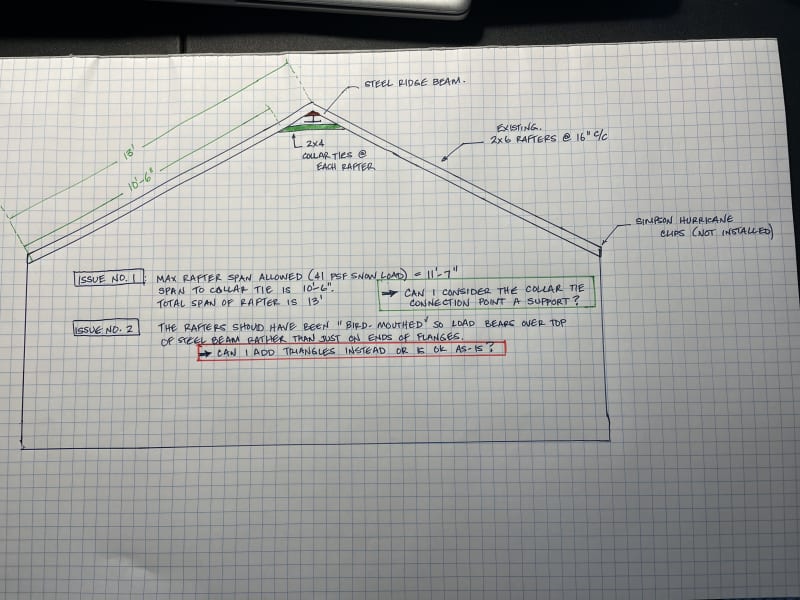DevinTheStudent
Civil/Environmental
Hi all,
have a few questions about collar ties and roof rafters in a vaulted ceiling. See attached photo for more information.
Q1) In this situation do the collar ties help support roof rafters and can this be considered a support allowing a span of 10'-6''?
Q2) Rafters should have been bird mouthed however can leaving them as is still distribute load accordingly?

have a few questions about collar ties and roof rafters in a vaulted ceiling. See attached photo for more information.
Q1) In this situation do the collar ties help support roof rafters and can this be considered a support allowing a span of 10'-6''?
Q2) Rafters should have been bird mouthed however can leaving them as is still distribute load accordingly?

